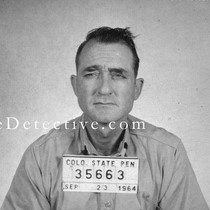
1918 - 1967
Luis José Monge
Summary
Name:
Luis José MongeYears Active:
1963Birth:
June 21, 1918Status:
ExecutedClass:
Mass MurdererVictims:
4Method:
Bludgeoning / Stabbing / StrangulationDeath:
June 02, 1967Nationality:
USA
1918 - 1967
Luis José Monge
Summary: Mass Murderer
Name:
Luis José MongeStatus:
ExecutedVictims:
4Method:
Bludgeoning / Stabbing / StrangulationNationality:
USABirth:
June 21, 1918Death:
June 02, 1967Years Active:
1963bio
Luis José Monge was born on June 21, 1918, in Puerto Rico and later moved to the mainland United States, where he grew up in New York. As an adult, Monge worked as an insurance salesman and eventually settled with his wife and ten children in Denver, Colorado. There are no records indicating he had a history of violent crime prior to the murders, but a minor criminal episode occurred in 1961, when he abandoned his family for two months and served a short sentence in Louisiana for vagrancy.
Despite his seemingly ordinary occupation and family life, there were disturbing problems beneath the surface. Monge’s household was large and financially strained, and his relationship with his children was later revealed to be abusive. These troubling behaviors eventually came to light, setting the stage for the horrific acts he would commit.
By 1963, Monge’s marriage had become strained, especially after his wife Leonarda discovered he had been sexually abusing their 13-year-old daughter, Diann Kissell.
murder story
On the morning of June 29, 1963, Luis Monge murdered four members of his immediate family at their Denver home. The victims included his 43-year-old wife, Leonarda, and three of their children: Alan (6), Vincent (4), and baby Teresa (11 months old). The crime was cold, calculated, and deeply disturbing in both motive and method.
Monge's decision to kill his wife and children stemmed from a desire to cover up the sexual abuse he had committed against his 13-year-old daughter. Once Leonarda learned of the abuse, Monge feared she would expose him. Instead of facing the legal and personal fallout, he acted violently. He bludgeoned Leonarda to death with a steel bar. He then killed baby Teresa by stabbing her, choked young Vincent, and bludgeoned Alan, again using the steel bar.
After the murders, Monge calmly called the police and confessed to what he had done. When officers arrived at the house, they found the gruesome scene and immediately arrested him.
Monge initially pleaded not guilty by reason of insanity. However, court-appointed psychiatrists evaluated him and concluded he was sane. He later changed his plea to guilty. During the penalty phase, a jury was convened to determine whether he should be sentenced to life in prison or death. The jury recommended the death penalty. His conviction and sentence were upheld on appeal.
In 1966, Colorado Governor John Arthur Love had placed a temporary suspension on executions, pending a public referendum on capital punishment. That November, voters chose to retain the death penalty by a wide margin. In early 1967, Monge made headlines again when he requested to be executed by hanging at high noon on the front steps of Denver’s City and County Building. The request was denied.
In April 1967, Monge dismissed his legal team and ordered that no further appeals be made on his behalf. Despite pleas for clemency from his surviving seven children, Monge insisted on accepting his fate. He spent time with his children one final time during his last week alive.
On June 2, 1967, at the age of 48, Luis José Monge was executed in Colorado’s gas chamber at the state penitentiary in Cañon City. His execution drew public protests from the Colorado Council to Abolish Capital Punishment, but Monge remained firm in his acceptance of death. Following his execution, his wish to donate one of his corneas was honored; it was transplanted to a teenager at a reformatory facility.
He was buried in the pauper’s section of Greenwood Pioneer Cemetery in Cañon City, just feet away from another executed inmate, John Bizup Jr. The metal marker that identifies his grave has since been vandalized with bullet holes. The gas chamber used in his execution was officially retired afterward and now stands as an exhibit in the Museum of Colorado Prisons.